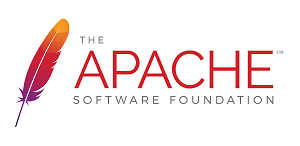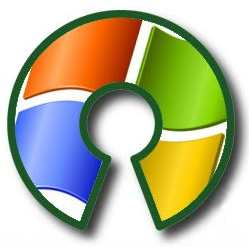Home »
Free and open-source software
Important License in Free and Open Source Software
By Monika Sharma, on February 17, 2020
It's important to take note that there are no good or bad licenses and that no license is superior to another. Anybody can make an open-source license that suits their extravagant, which is the explanation that there are such huge numbers of out there. This could make picking an open-source license a challenging business, particularly for those of us who are not knowledgeable in the terms and conditions and have never had open-source licenses clarified completely. To assist tight with bringing down the choice and understand everything, the OSI set up a rundown of affirmed licenses, comprising of a little more than 80 open source licenses that are most usually utilized.
Of the many open source licenses in the OSI approved list, some rule and are utilized by probably the most well-known open-source projects out there. We've tried to list out all of them clarifying the most commonly utilized open source licenses.
GNU General Public License (GPL)

The GNU's General Public License is the most well-known open source license around. Richard Stallman made the GPL shield the GNU software from getting exclusive, and it is a particular execution of his "copyleft" idea.
GPL is a copyleft permit. This implies any product that is composed dependent on any GPL part should be shared or released as open source. The outcome is that any product that uses any GPL open source component is required to release its full source code and the entirety of the rights to modify and share the whole code.
There has consistently been some confusion concerning what comprises a 'work dependent on' another work, which triggers the GPL correspondence commitment. The FSF attempted to add greater lucidity to GPLv3 regarding when the correspondence commitment is activated. The FSF even composed another GPL license, the Affero license, to address a particular confusion alluded to as the "ASP loophole".
Also, the FSF attempted to build the similarity of the GPLv3 with different licenses. To consolidate two codes into a bigger work, both the projects must allow it. If such rights are allowed by both the projects' licenses, they are perfect. By making the GPLv3 progressively good, the FSF extended advancement choices.
Eclipse Public License

Created by the Eclipse Foundation, the Eclipse Public License (EPL) is an open-source license. It's developed from the Common Public License (CPL). The Eclipse codebase now accessible under the EPL was in the past licensed under the CPL.
The EPL license is a type of copyleft license. On the off chance that you change an EPL'ed segment and disperse it in the source code form as a major aspect of your program, you're required to reveal the altered code under the EPL. On the off chance that you circulate such a program in its object code form, you're required to express that the source code can be made accessible to the beneficiary upon demand. You're likewise required to share the strategy for mentioning the source code.
The EPL shields the author from potential claims or harms caused if an organization utilized his/her part in a business item. It additionally offers a patent award.
MIT License

MIT is one of the most lenient software licenses. Essentially, you can do anything you desire with source code licensed under the MIT license- just if you include a duplicate of the first MIT license and copyright notice to it. Its effortlessness is the explanation for its high adaption rate among engineers.
The Apache License

Released by the Apache Software Foundation (ASF), The Apache License is an open-source software license. It's a popular and broadly used license supported by a solid community. The Apache License permits you to freely utilize, change, and share any Apache license software. Nonetheless, at the same time, you're required to follow the provisions of the Apache License.
The Apache Group (later named the Apache Software Foundation) shared the main variant of its license in 1995, however, it's uncommon that you'll go over components that despite everything convey this license.
In 2000, when Berkeley acknowledged the contention put to it by the Free Software Foundation and resigned their publicizing condition from the BSD License and framed the altered BSD license, Apache did in like manner and made the Apache License form 1.1.
In the year 2004, the ASF chose to withdraw from the BSD model somewhat more drastically and delivered the Apache License Version 2.0 by conceding licenses rights and characterizing strong meanings of the ideas it uses to make it increasingly coherent.
Microsoft Public Licenses (Ms-PL)

Released by Microsoft, The Microsoft Public License is a free and open-source software license, which wrote it for its projects that were shared as open source.
You are allowed to imitate and distribute unique or derived works of any product authorized under the Ms-PL license. Nonetheless, you may not utilize any contributor's name, logo, or trademarks when you do as such. The Ms-PL secures the creators by explicitly not offering any express guarantees or assurances for utilizing your code, so the creator isn't at risk if the code doesn't function admirably sometimes.
Furthermore, if you distribute any segment of the product in its source code form, you may do so just under the Ms-PL by including a complete copy of its license with your released version. If you convey any bit of the product in its incorporated or object code form, you may just do as such under whatever other licenses that consent to the Ms-PL.
At the point when you release software (or its bit) under the Ms-PL, you're not required to disperse its source code. You may do as such on the off chance that you need to, yet you're not obliged. Nonetheless, you're required to hold all copyright, patent, trademark, and attribution see that are initially present in the product.
Berkeley Software Distribution

BSD Licenses or the initial BSD License were released in two variations - the Modified BSD License, and the Simplified BSD License is a group of permissive free licenses.
The BSD License lets you freely alter and share your product's code in the source or binary configuration as long as you hold a duplicate of the copyright notice, contents of conditions, and the disclaimer.
Common Development and Distribution License

CDDL is an open-source license distributed by Sun Microsystems to overrule the Sun Public License (SPL). The CDDL license is considered by Sun (presently Oracle) to be SPL ver.2. It is grown taking inspiration from the Mozilla Public License (MPL). Sun used to release its free software/open-source projects under its Sun Public License (SPL) before it went to depend upon the CDDL in 2004. CDDL is frequently named as a tidied-up form of the MPL and is made to encourage reusability.
At the point when you release your product in an executable structure (any structure other than source code), you are required to make the source code accessible too under the CDDL. The executable code might be discharged under the CDDL or any CDDL compatible licenses.
Advertisement
Advertisement